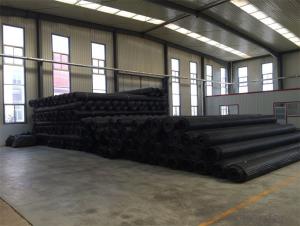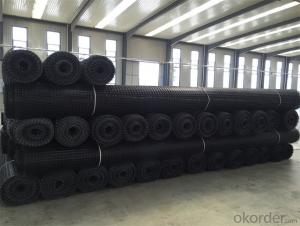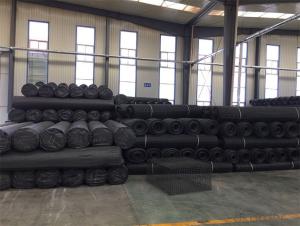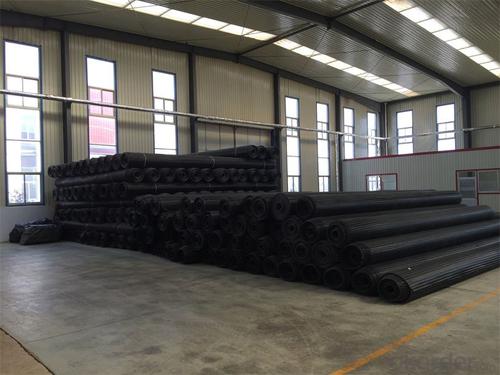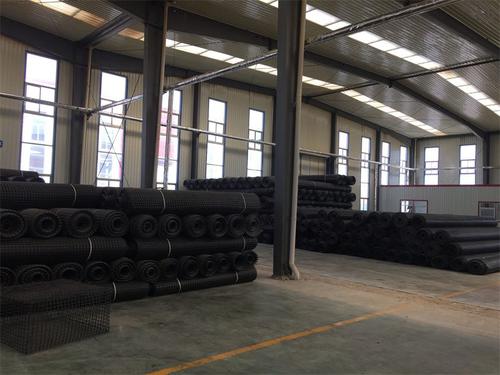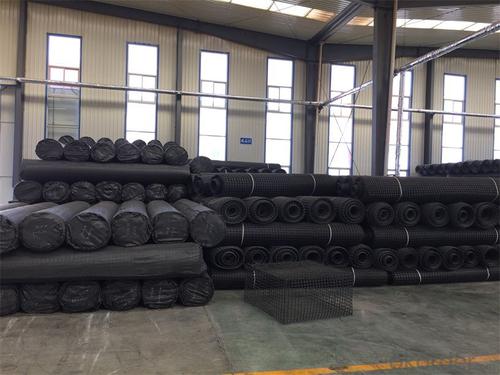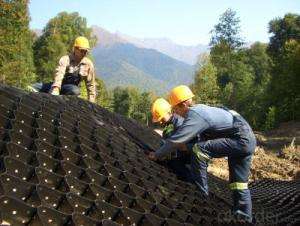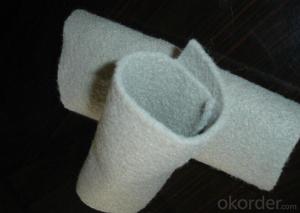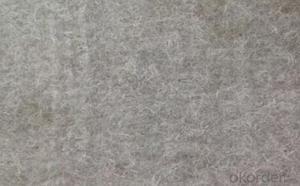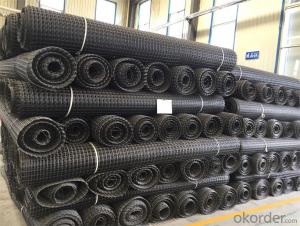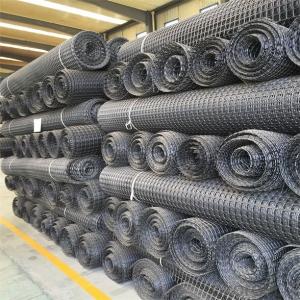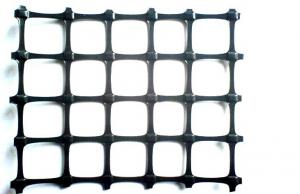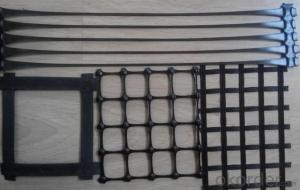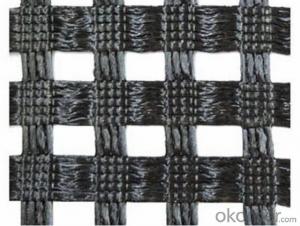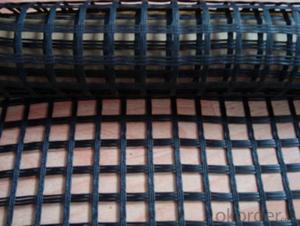Geocells for Sale - PP Biaxial Plastic Geogrid with High Tensile Strength Warp Knitted Cmax Brand
- Loading Port:
- Tianjin
- Payment Terms:
- TT OR LC
- Min Order Qty:
- 20000 m²
- Supply Capability:
- 50000000 m²/month
OKorder Service Pledge
OKorder Financial Service
You Might Also Like
Fiberglass Geogrid Introduction:
Fiberglass geogrid is a kind of planar mesh material using alkali-free fiberglass yarn as base body and then coated with high quality modified asphalt. It is warp knitted with oriental structure which gives full play of yarn strength and improves its mechanical property to make the product high tensile, tearing and creep-resistant. Moreover, the composite property of coating with asphalt makes full protection of the fiberglass matrix and greatly improves its wear and shear resistance. All the advantageous functions make the product have a good performance in pavement strengthening, track cracking and solving difficulties of strengthening the bituminous pavement.
Fiberglass Geogrid Features:
1. Light weight, high tensile strength, high modulus, low elongation and good toughness.
2. Corrosion resistance, no long-term creep, long life span.
3. Good physical and chemical stability and good thermal stability.
4. Resistant to fatigue cracking, high-temperature track and low temperature shrinkage cracking.
5. Delaying and decreasing crack reflection.
Specifications | PET20-20 | PET30-30 | PET40-40 | PET50-50 | PET80-80 | PET100-100 | PET120-120 |
Elongation(%) | 10%~15% | ||||||
Vert Tensile strength(KN/m) | 20 | 30 | 40 | 50 | 80 | 100 | 120 |
Horiz Tensile strength(KN/m) | 20 | 30 | 40 | 50 | 80 | 100 | 120 |
Grid(mm) | 12.5×12.5 20×20 24.5×24.5 | ||||||
Width(m) | 1—6 | ||||||
Fiberglass Geogrid Application:
1. Road surface asphalt overlay construction engineering; Asphalt layers
reinforcement.
2. Converting old cement concrete road into composite road; Restraining
reflection cracking caused by block shrinkage.
3. Road extension; Preventing and controlling the cracking caused by new
and old combination and uneven settlement.
4. Treatment of the conjunction between tunnel and bridge or foundation.
Packaging & Shipping:
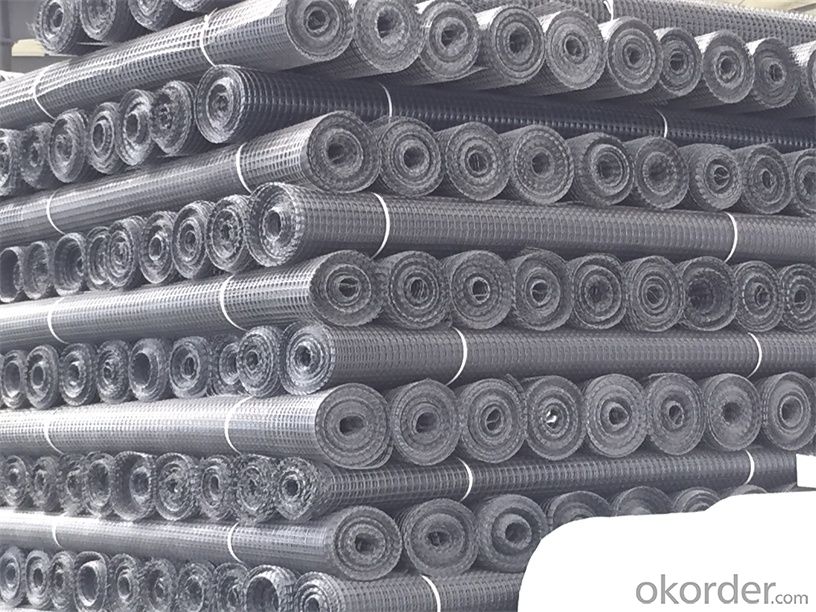
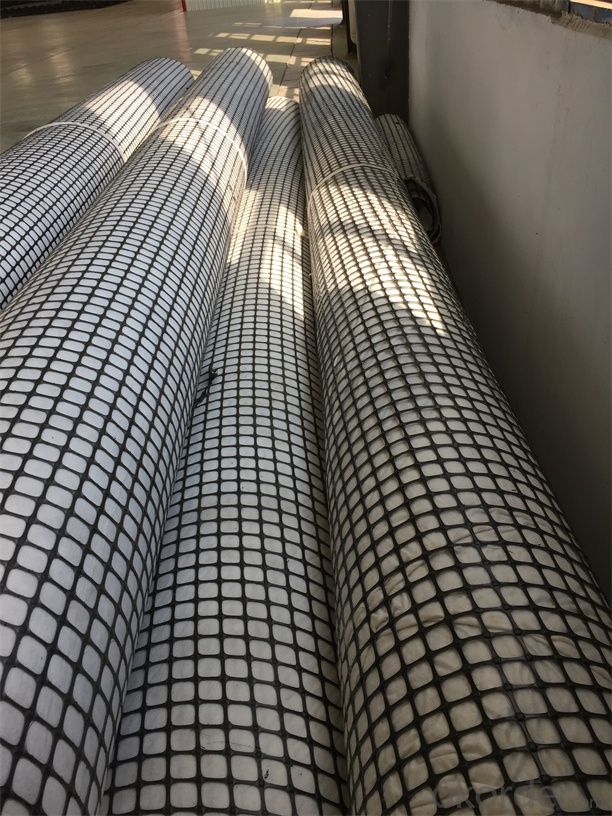
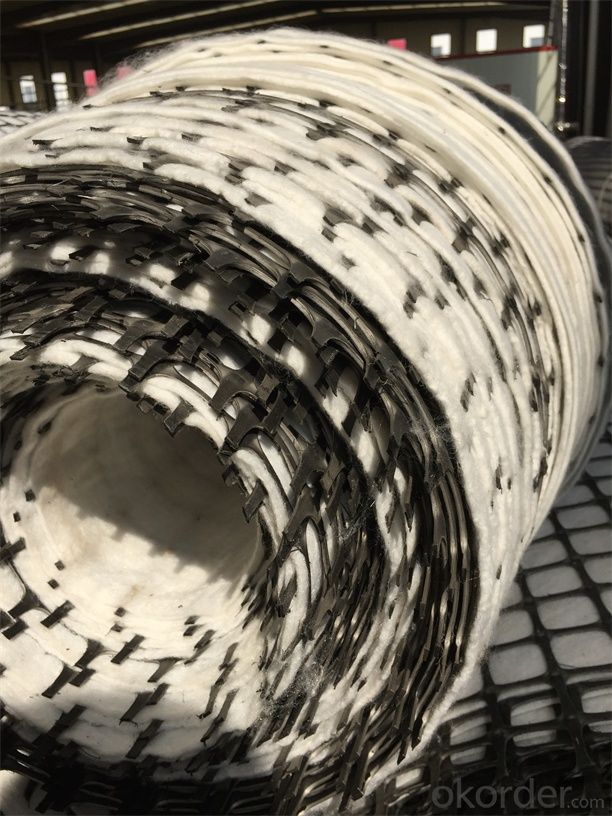

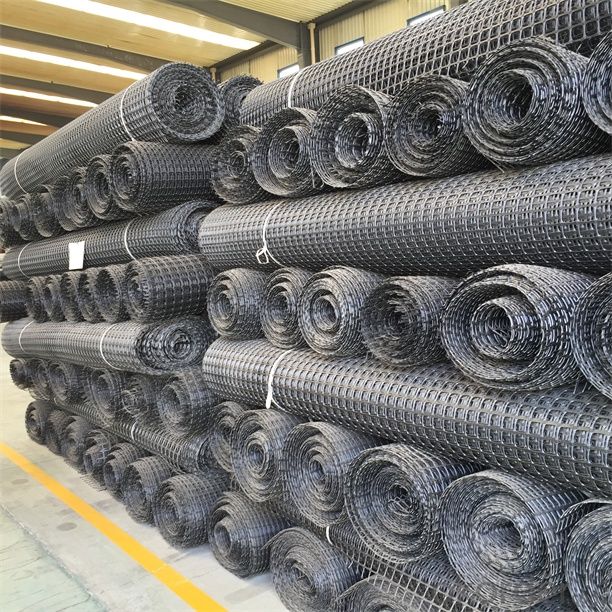
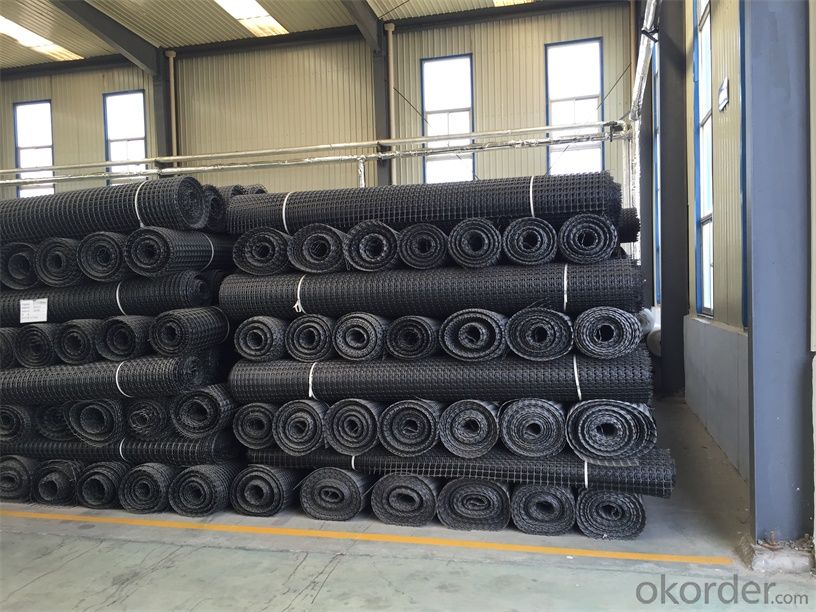


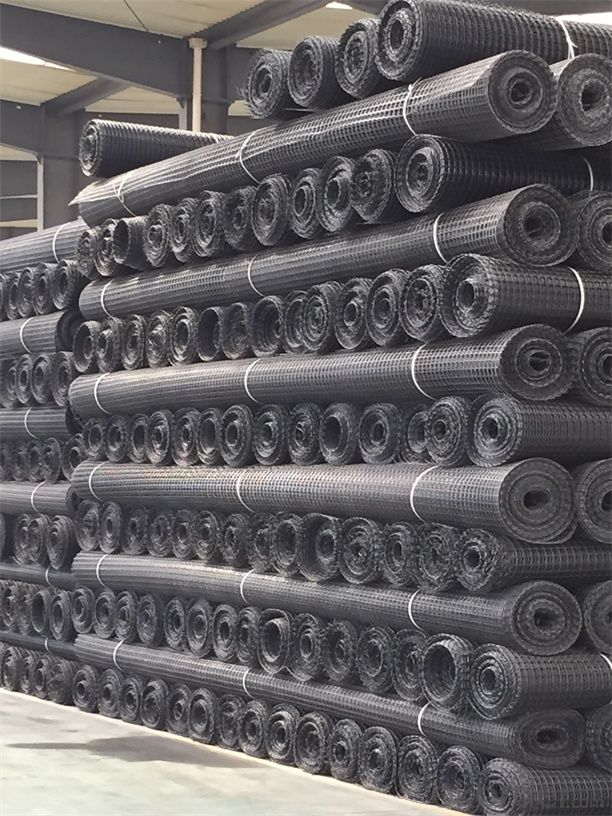
FAQ:
1. How to order your geogrid ?
a) Tensile strength in warp & weft direction
b) Grid size
c) Roll Width and length
d) Quantity
2. What is the Payment term?
a) TT
b) LC AT SIGHT
c) cash
d) 30% contact value as deposit ,the blance 70% be paid after received the copy of bl .
3. Delivery time
a) 19-25 days after received your depsit .
4. What is MQQ ?
a) 2500 m2 as MQQ , we can also produce sample for you .
Welcome to send your inquiry to us, and if you have any question, we can also help you.
- Q: PA66 plus 30% glass Shrink is how much
- PA66 plus 30% glass fiber shrinkage 0.7%--1.0%, different brands of different manufacturers of some differences.
- Q: Can geogrids be used in shoreline protection?
- Yes, geogrids can be used in shoreline protection. Geogrids are commonly used in erosion control and shoreline stabilization projects. They provide reinforcement to the soil and help prevent erosion, especially in areas where waves and currents are strong. Geogrids can be installed along the shoreline to stabilize the soil, reduce erosion, and protect the coastline from further damage.
- Q: Should the municipal geogrid be included in the area of overlap, and, if necessary, the proportion of the area to be included?
- Per 1000 square meters of the amount of the project is a fixed amount of 1100 square meters (including the overlap and loss)
- Q: 0.3m drainage geogrid
- Of course, there are many other manufacturers
- Q: What is the recommended geogrid aperture shape for specific applications?
- The recommended geogrid aperture shape for specific applications varies depending on the specific requirements of the project. However, commonly used shapes include square, rectangular, and hexagonal apertures. These shapes provide different levels of stability, soil confinement, and load distribution, allowing engineers to select the most suitable option based on factors such as soil type, slope angle, and anticipated loads.
- Q: What are the factors that affect the installation and survivability of geogrids in harsh environments?
- The factors that affect the installation and survivability of geogrids in harsh environments include the quality of the geogrid material, proper installation techniques, the severity of the environmental conditions, and the level of maintenance and monitoring. The choice of a high-quality geogrid material that can withstand the specific conditions is crucial. Proper installation techniques, such as adequate compaction, correct anchoring, and suitable soil preparation, ensure the geogrid's stability and longevity. The severity of the environmental conditions, such as extreme temperatures, high winds, or corrosive elements, can also impact the geogrid's performance. Regular maintenance and monitoring, including inspections and timely repairs, are essential to enhance the survivability of geogrids in harsh environments.
- Q: Can geogrids be used in temporary construction platforms?
- Yes, geogrids can be used in temporary construction platforms. Geogrids are commonly used in construction projects to reinforce soil and provide stability. They can be used as a cost-effective solution for temporary construction platforms by improving load-bearing capacity and preventing soil erosion.
- Q: Can geogrids be used in floating road construction?
- Yes, geogrids can be used in floating road construction. Geogrids are often used to reinforce and stabilize the subgrade in road construction projects, including floating roads. They provide additional strength and stability to the road structure, allowing it to withstand heavy loads and prevent deformation.
- Q: What is the use of glass fiber grille paving asphalt road
- Silicon oxide, inorganic materials, and their physicochemical properties very stable, and has high strength, high modulus, high abrasion resistance and cold resistance of excellent, no long-term creep; thermal stability; aggregate interlock and restrictions on the network structure; improving the bearing capacity of asphalt mixture. Because of the special modified asphalt on the surface, it has double composite properties, which greatly improves the wear resistance and shear capacity.
- Q: As well as how to fill out the form, thank you!! Urgently
- Do you need a test report for a two-way geogrid
Send your message to us
Geocells for Sale - PP Biaxial Plastic Geogrid with High Tensile Strength Warp Knitted Cmax Brand
- Loading Port:
- Tianjin
- Payment Terms:
- TT OR LC
- Min Order Qty:
- 20000 m²
- Supply Capability:
- 50000000 m²/month
OKorder Service Pledge
OKorder Financial Service
Similar products
Hot products
Hot Searches
Related keywords
